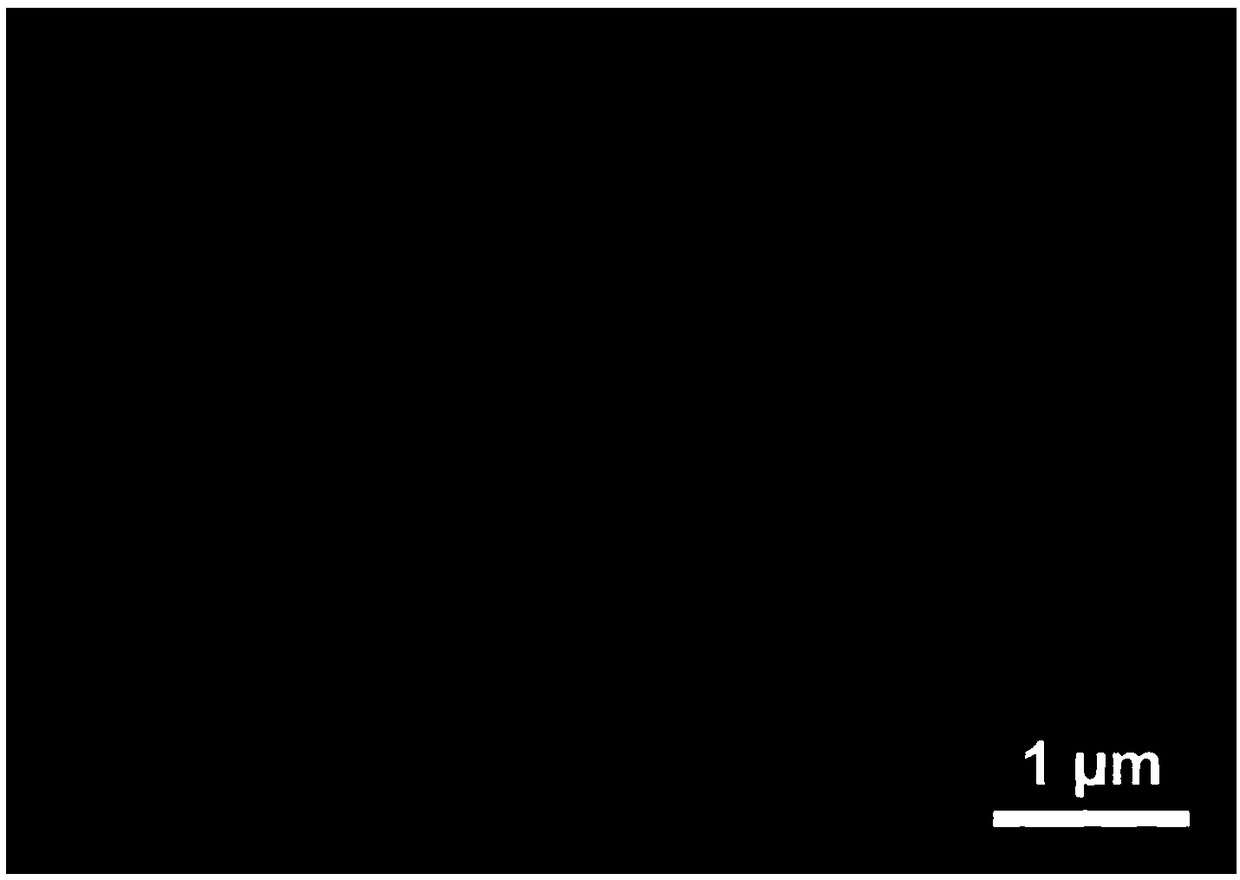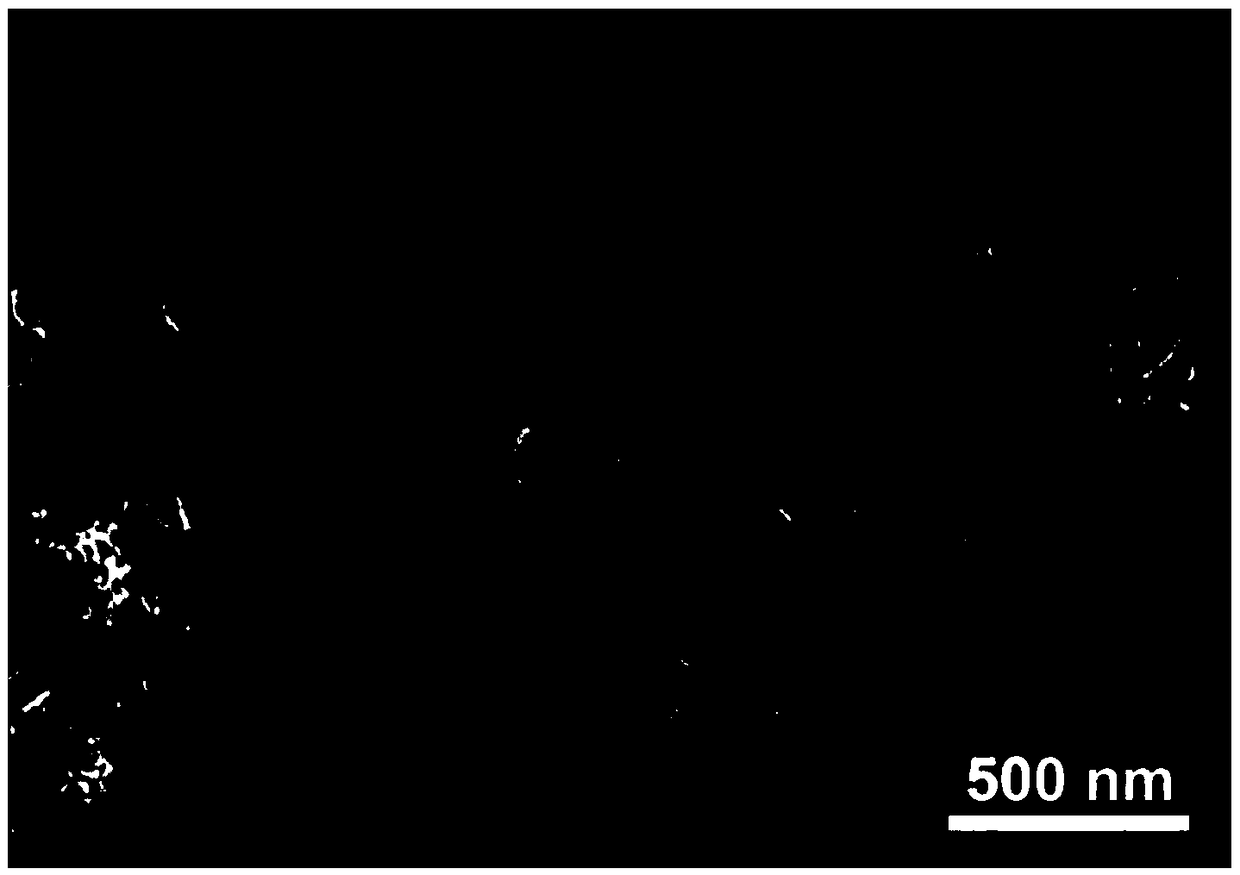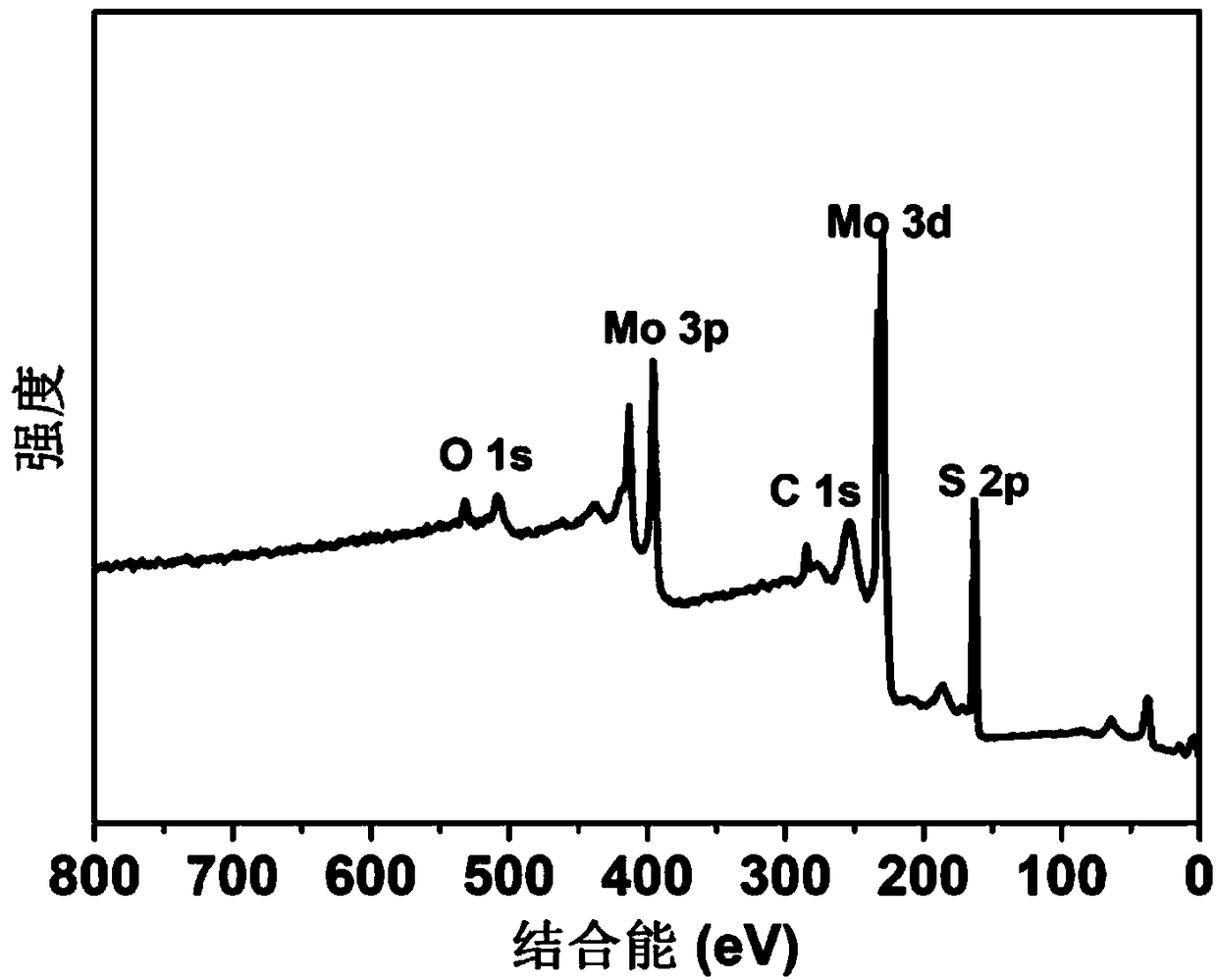Method for preparing flexible MoS2/CNFs sodium ion battery negative electrode material by combining electrostatic spinning and hydrothermal method, and product
A sodium-ion battery and electrospinning technology, applied in the field of electrochemical energy storage, can solve the problems of inflexibility and inability to meet the needs of flexible devices, etc., and achieve the effect of favorable layer spacing, good sodium storage performance, and improved battery performance
- Summary
- Abstract
- Description
- Claims
- Application Information
AI Technical Summary
Problems solved by technology
Method used
Image
Examples
Embodiment 1
[0047] 1) Dissolve 1g of polyacrylonitrile in 10g of DMF and stir well to form a uniform solution.
[0048] 2) Electrospinning: Put the solution prepared in step 1) into a syringe, connect the syringe to a stainless steel needle through a catheter, and use a syringe pump to control the flow rate of 4 mL / h to spray the solution through the needle. Aluminum foil was used as the nanofiber collector, and the vertical distance from the needle was 15 cm, and it was grounded at the same time. Connect the needle tube and the aluminum foil to the two poles of the high-voltage generator respectively, the voltage is 15kv, and the temperature is 40°C and the humidity is 60%, and the organic nanofibers are started to be obtained on the aluminum foil.
[0049] 3) The obtained organic nanofibers were placed in a sealed tube, and under the protection of Ar, the temperature was raised to 800°C at 5°C / min for 3 hours, and then cooled naturally to obtain flexible CNFs nanomaterials.
[0050] f...
Embodiment 2
[0052] 1) Take 0.15g sodium molybdate, 0.4g L-cysteine, dissolve in 30mL deionized water, and ultrasonically dissolve;
[0053] 2) Put the solution obtained in step 1) into a 50mL reactor, and react for 8 hours at a temperature of 180°C. get nano-MoS 2 Material;
[0054] 3) The resulting nano-MoS 2 The material was placed in a sealed tube under Ar / H 2 Atmosphere (volume ratio Ar:H 2 =0.92:0.08, 40mL / min), raise temperature at 2°C / min to 800°C for 2 hours, cool naturally after completion, and MoS can be obtained 2 Material.
[0055] figure 2 MoS prepared for this example 2 The SEM image of the material, by figure 2 It can be seen that when the flexible CNFs are not added as the growth substrate, the synthesized MoS 2 have the shape of nanospheres.
Embodiment 3
[0057] 1) Dissolve 1g of polyacrylonitrile in 12g of DMF and stir well to form a uniform solution.
[0058] 2) Electrospinning: Put the solution prepared in step 1) into a syringe, connect the syringe to a stainless steel needle through a catheter, and use a syringe pump to control the flow rate of 6 mL / h to spray the solution through the needle. Aluminum foil was used as the nanofiber collector, and the vertical distance from the needle was 18 cm, and it was grounded at the same time. Connect the needle tube and the aluminum foil to the two poles of the high-voltage generator, the voltage is 18kv, and the temperature is 40°C and the humidity is 60%, and the organic nanofibers are started to be obtained on the aluminum foil.
[0059] 3) Place the obtained organic nanofibers in a sealed tube, under the protection of Ar, raise the temperature at 5°C / min to 800°C for 3 hours, and cool naturally after completion, to obtain flexible carbon nanofibers.
[0060] 4) Take 0.2g sodium ...
PUM
| Property | Measurement | Unit |
|---|---|---|
| diameter | aaaaa | aaaaa |
Abstract
Description
Claims
Application Information
 Login to View More
Login to View More - R&D
- Intellectual Property
- Life Sciences
- Materials
- Tech Scout
- Unparalleled Data Quality
- Higher Quality Content
- 60% Fewer Hallucinations
Browse by: Latest US Patents, China's latest patents, Technical Efficacy Thesaurus, Application Domain, Technology Topic, Popular Technical Reports.
© 2025 PatSnap. All rights reserved.Legal|Privacy policy|Modern Slavery Act Transparency Statement|Sitemap|About US| Contact US: help@patsnap.com



